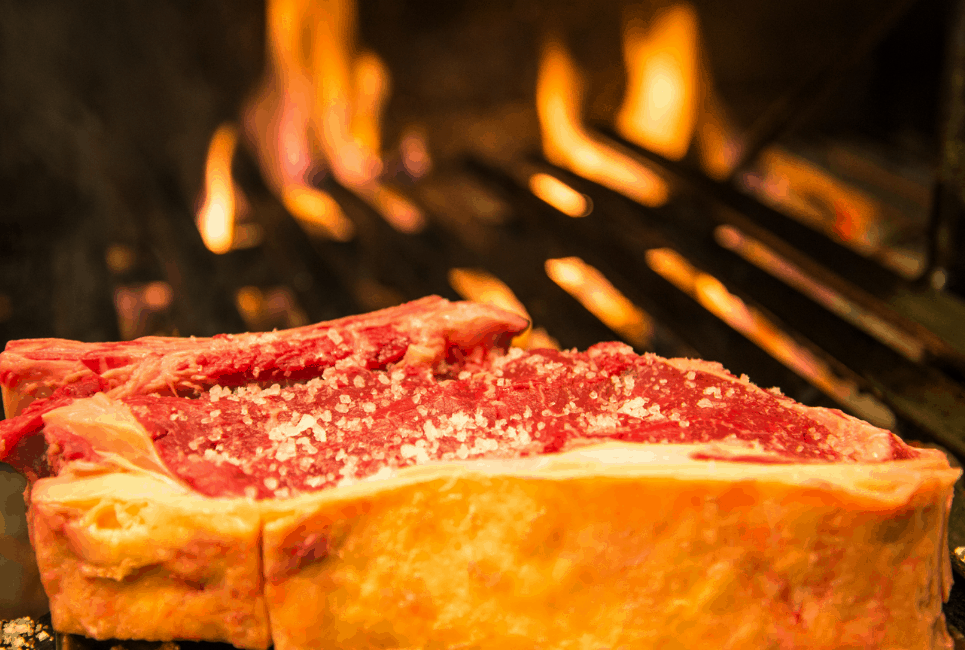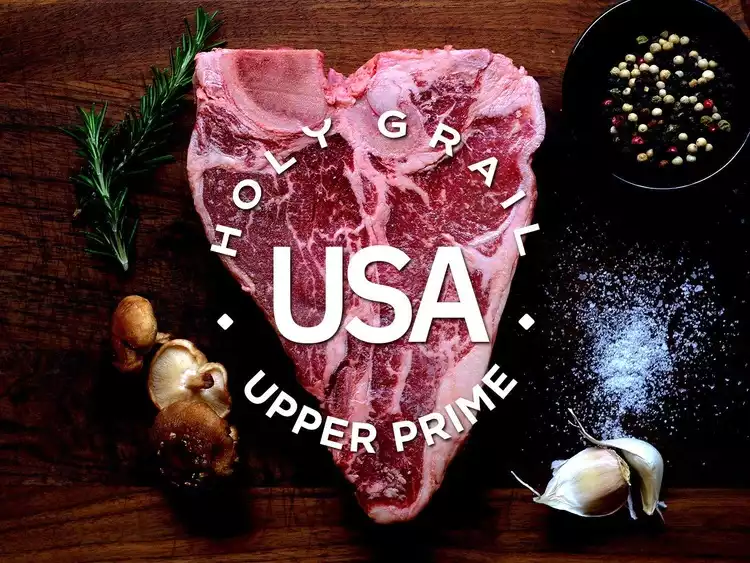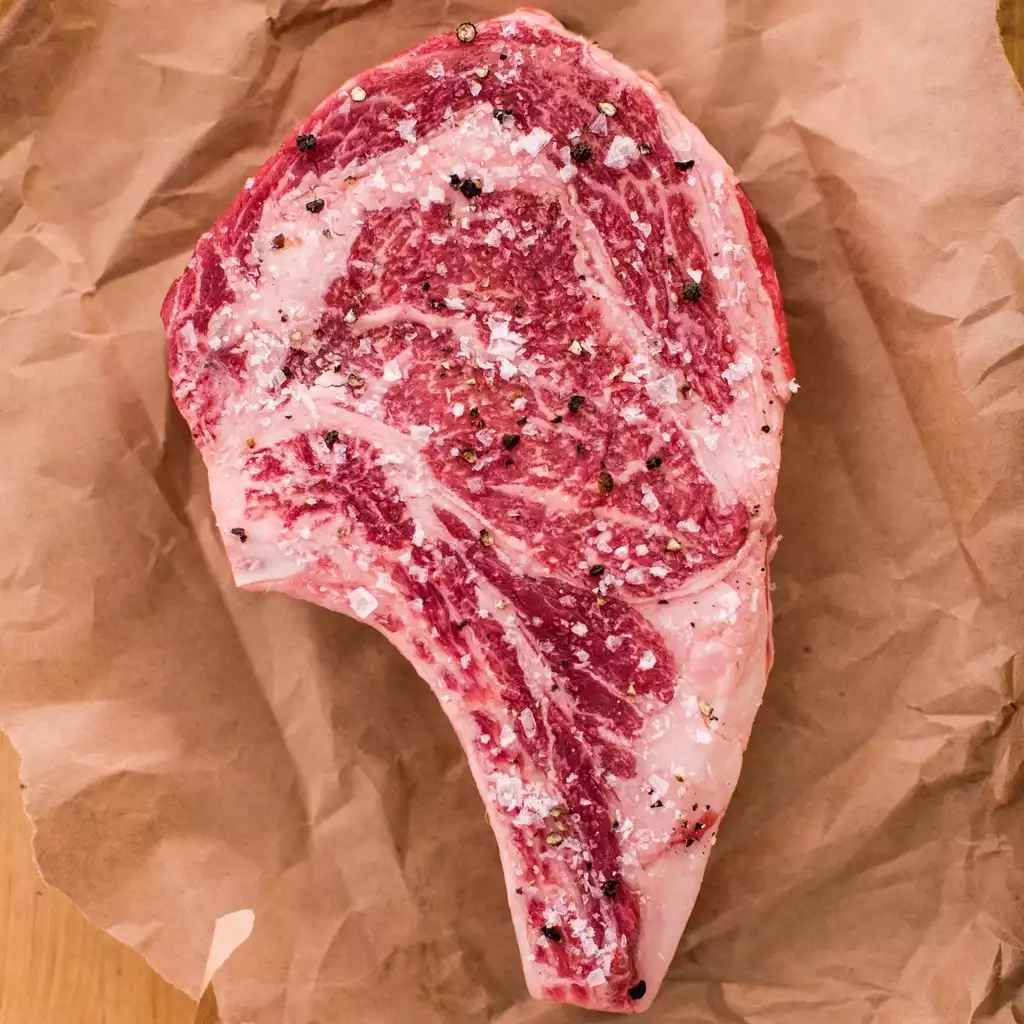- US Wellness Meats Review: What You Should Know Before Buying - April 12, 2023
- Smoked Chuck Roast vs Brisket: Which Cut Is Better Quality? - September 22, 2022
- Porterhouse vs Ribeye: Which Steak Wins? - July 25, 2022
Ahhh, steak, steak, steak. Once the mainstay of any restaurant visit, now a glaringly noticeable omission from any BBQ, the steak is not so humble anymore. And with so many different cuts and types available to you, it’s understandably overwhelming when it comes down to the choice of steak.
How to find the best meat for grilling is a true art in itself, owing to all these choices available to you as the budding steak master. Today, we’re going to have a look at porterhouse vs ribeye, so read on to see if either of these succulent slices might fit the bill for you.
Before tucking in, let’s have a look at some of the main differences between porterhouse vs ribeye.
Main Differences Between Porterhouse vs Ribeye
The Main Differences Between Porterhouse vs Ribeye are:
- Ribeye is taken from around the rib, whereas the porterhouse comes from the loin of the cow.
- Porterhouse has the bone left in, whereas ribeye often comes without a bone (though sometimes it does have the bone left in)
- Ribeye has a higher fat content, whereas porterhouse has a more meaty profile.
- Porterhouse is effectively made up of two different cuts of meat – the tenderloin and the strip steak (or top loin) – whereas ribeye is slightly more contained.
- Ribeye is slightly more expensive as a beef cut, whereas porterhouse is a bit more affordable.
- Porterhouse can be a little trickier to cook due to that mighty bone, whereas the ribeye is relatively straightforward and easy.
If you're looking for top quality beef, Holy Grail Steak Co. is one of the best places to get ahold of the rarest and finest steaks on.
Porterhouse – The Basics
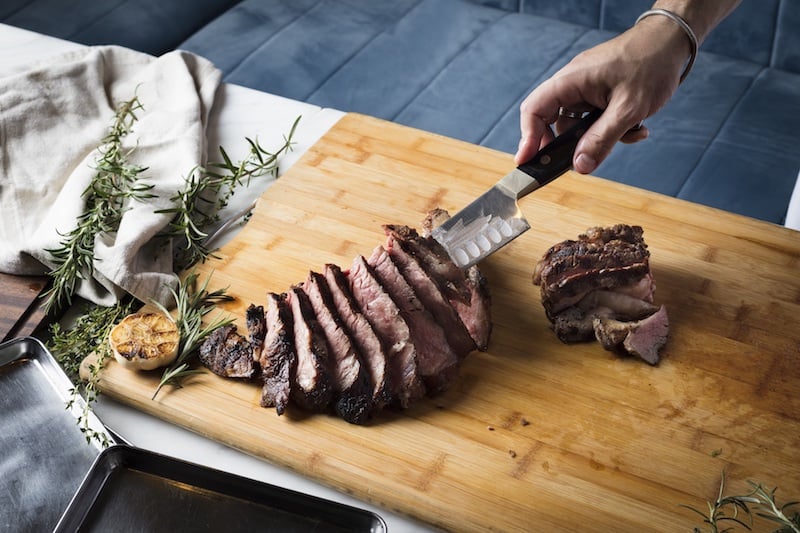
So let’s sharpen those steak knives and tuck into the first steak on the plate in this epic head-to-head of meatiness – the porterhouse.
Any steakhouse that purports to be a steakhouse and doesn’t have a porterhouse on the menu might as well rename and rebrand. The porterhouse steak is the undisputed king of any steakhouse, mainly for its size and fairly eye-popping presentation.
It’s a combo of the tenderloin, one of our favorite cuts, and the New York strip steak, which itself is a worthy contender in the battle between the New York strip vs ribeye. It’s deliciously meaty and has slightly less fat than some of the other steaks out there, which can be preferable!
Appearances can be deceiving, so let’s take a look at what you can expect when you’re served up a porterhouse.
What does a Porterhouse Steak look like?

In one word – big.
A porterhouse steak is a fairly hefty sight to behold, even to the hungriest steak lover, and is made up of two different steaks itself, you can expect it to be fairly awe-inspiring.
With the New York strip and tenderloin being held together by a central bone structure, and often weighing more than 2lb, often the porterhouse is a great steak for two people.
However, if you’re in an exceptionally hungry mood, you may challenge yourself to devour the whole thing.
As you’ve surely noticed by now, the bone in the center of a porterhouse is a familiar ‘T’ shape. So isn’t a porterhouse just a T-bone steak?
While many butchers and restaurants market these two steaks as the same thing, calling a porterhouse a T-bone and vice versa, there is actually a difference – take a look at our guide to T-bone steak if you’re looking for more info.
The USDA stipulates that the requirement for a porterhouse to be called a porterhouse is the amount of tenderloin steak.
Porterhouse steaks require at least 1.25 inches of meat from the center bone to the cut’s widest point. So if your porterhouse is looking a little slim, you may well have fallen victim to mistaken identity!
How Does Porterhouse Taste?
With the porterhouse, you have not one but two different cuts of meat on the same plate. This means you have two very slightly different taste profiles in one. You’ve the “tenderness” of the tenderloin on one side of the bone, and on the other side, you’ve got the meatiness and beefiness of the New York strip.
So there’s absolutely something for everyone with this behemoth of a steak. And because it’s on the bone, you’ll get an extra steak flavor hit when you cook it, as the fat on the bone flavors the meat. It’s juicy, flavorful, and tender, all at the same time – a gorgeous meeting of tenderness and steak flavor on one plate.
How Much Does Porterhouse Cost?
Beef prices can vary wildly, especially when you take into account the quality of the meat, whether it has been dry-aged, grass-fed, hung, and all sorts of other factors too. Plus, where you get your beef from can also cause changes in the price you pay. That being said, we can get a pretty good estimate for the cost of a porterhouse.
On average, a porterhouse steak will cost you roughly $12 per lb. This will mean that you’ll probably be looking at paying around $30 for a full-size, quality porterhouse, as you’ll want one which is a little over 2lb. When you factor in that you may be feeding two, this isn’t too bad – but if you’re looking to devour it yourself, it might seem a little steep!
If you're looking for top quality beef, Holy Grail Steak Co. is one of the best places to get ahold of the rarest and finest steaks on.
Best Way to Cook Porterhouse Steak
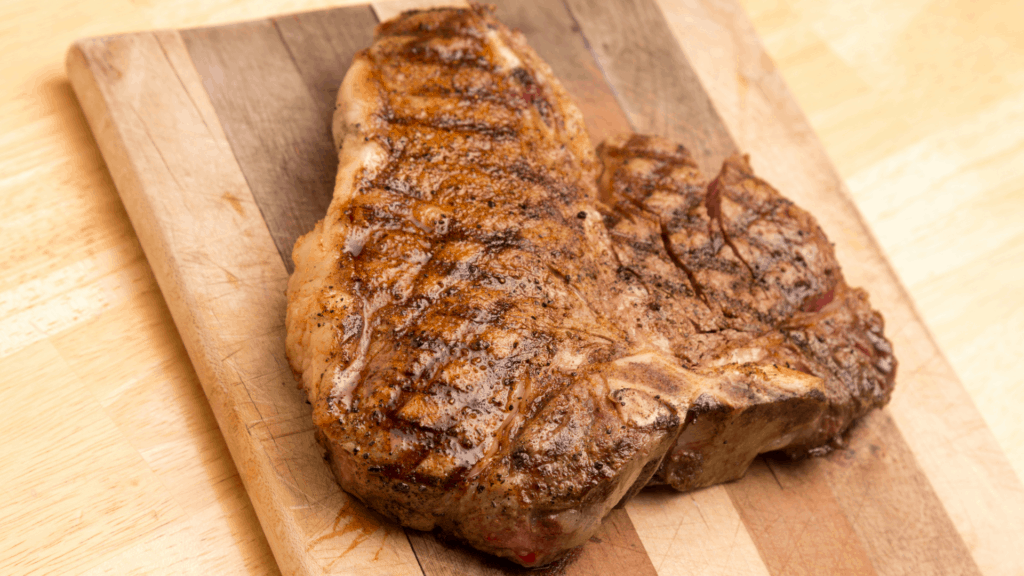
The porterhouse is a steak that lends itself perfectly to the grill. This gives the meat that exquisite steakhouse flavor that you can’t go wrong with – and as long as you follow the principles of grilling, you’ll be fine! The porterhouse can also work broiled or using a smoking hot iron skillet on the stovetop, so go with what you’re most comfortable with.
Let’s take a look at how you go about grilling your porterhouse to perfection. Follow these steps:
- Take your porterhouse out of the fridge and let it come to room temperature. This should take an hour or so. Season it well with plenty of salt and cracked black pepper.
- With the grill up to temperature, put the steak on the hottest part of the grill, making sure that the surface of the steak gets a good searing.
- Keep it on the high heat until the point where the fat looks like it could burn, then flip it over and do the same to the other side.
- If you want to get the full steakhouse effect (and earn your grill king stripes), then rotate the steak 45 degrees on the same side before flipping, and you’ll end up with those professional diamond grill marks – stepping up your grilling prowess for sure!
- Once you have a significant bit of browning on both sides, move it over to a cooler part of the grill to finish the cooking. Keep your meat thermometer handy, as a porterhouse is best served medium – so once your steak hits 145oF, it’ll be ready.
- If you want a proper steakhouse-style hack for your porterhouse, pop a pat of butter on the steak just before you take it off the grill. This adds an incredible richness to the porterhouse and brings out the flavor.
Ribeye – The Basics
You don’t get much more iconic than the ribeye. A mainstay of steakhouses and restaurants the world over, the ribeye is an absolute icon and even gives the prime rib a run for its money. Cut straight from the rib (surprisingly enough!), it’s even sometimes known as the ‘beauty steak’ for its perfectly marbled fat (at leas a GOOD ribeye should have marbling).
Juicy, flavorful tenderness, with just the right amount of fat gives it a wonderfully balanced flavor, and is available both as a bone-in cut and without a bone.
What does a Ribeye Steak look like?
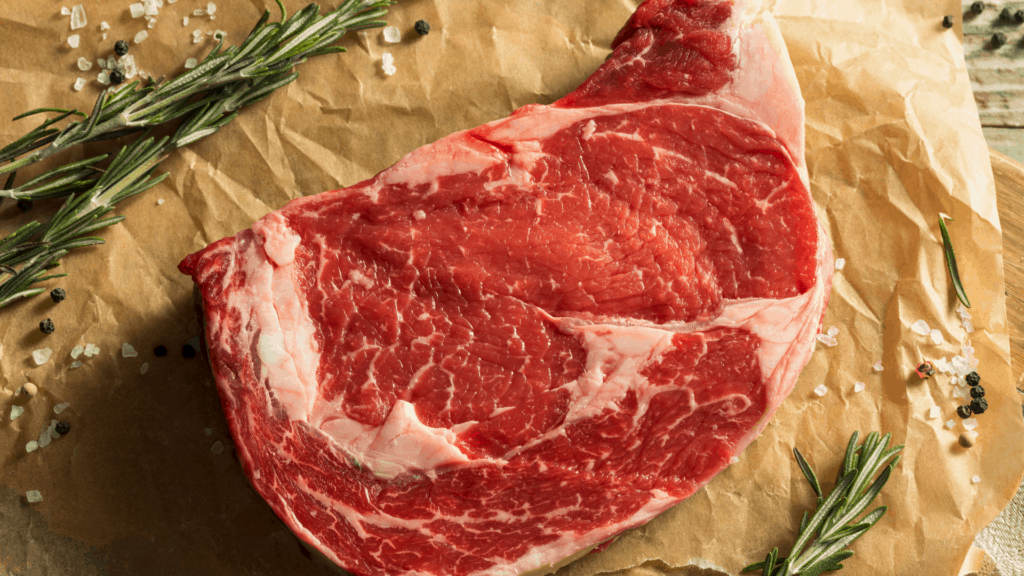
The ribeye is taken from the rib area of the cow and often has a swirl of fat marbling in the middle of the steak that’s usually in the shape of an eye – hence the name ribeye! In addition to the marbled fat inside the steak, there is also a good rim of fat on the edges.
Depending on how your ribeye is cut can mean that the muscle contained within it varies – some of them can be tender, and some can be slightly tougher. Don’t let this put you off, though – the ribeye is probably the most flavorful of all the steaks you can buy!
What Does Ribeye Steak Taste Like?
Owing to the slightly higher fat content compared to other steaks, the ribeye is beautifully buttery and delectably juicy. The meat has a glorious beefy flavor, and all these things together contribute to one of the richest steaks you can get your hands on.
The marbling of fat that is the hallmark of the ribeye also makes it wonderfully tender and gives it a wonderful buttery flavor when cooked to perfection.
How Much Does Ribeye Steak Cost?
If you’re looking for a one-way ticket to flavor town, you’re unfortunately going to have to pay the price for the privilege. As with all cuts of beef, the price fluctuates hugely depending on criteria like whether it’s wholesale, grass-fed beef, dry-aged, and so on and so forth.
On average, however, you’re looking at spending around $15 per lb for a boneless ribeye. Ribeye steaks that have the bone in are usually a little cheaper, at about $13 per lb. If you want to get your hands on a larger cut, you’ll be looking at $20 per lb, though, which is a bit of a mark-up.
No need to break out the fancy cooking techniques or seasonings with this impressive cut of meat. Natural marbling and a fatty cap make it stand out as one of our most tender, juicy cuts.
How Do You Cook Ribeye Steak?
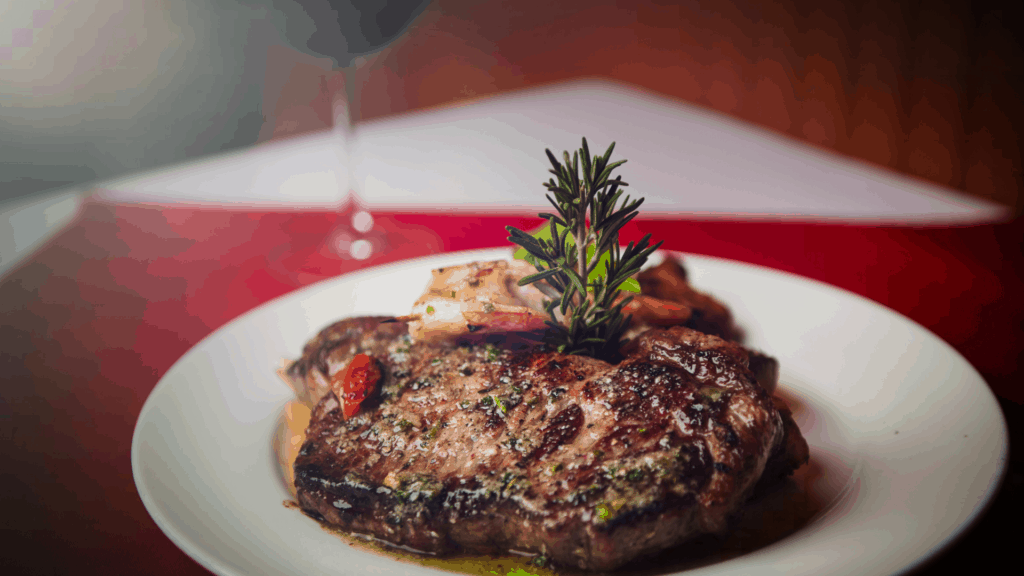
The ribeye is one of the most versatile cuts out there, as you can cook it in several different ways and get a fantastic and delicious result every time – whether that’s in the broiler, on the skillet, or the classic grilling technique.
However, whatever you do, you’ll want to make sure you cook it quickly over high heat to get a good brown crust on the outside of the steak and an excellent juicy interior. Here’s our step-by-step guide to grilling a ribeye:
- Take your ribeye steak out of the fridge and its packaging and let it come up to room temperature. Season it well with some salt and pepper.
- With the grill at its highest temperature, place the ribeye on the grill. To enjoy your ribeye to its fullest, you’ll want to aim for a medium-rare cook on it. This means you should grill each side for 3-5 minutes.
- Keeping your meat thermometer handy, take the temperature regularly, and once it has reached a temperature above 130oF, it’ll be ready to take off the grill.
- Leave it to rest for 5-10 minutes (if you can!) – lots of people don’t realize that the steak keeps on cooking once it’s been taken off the grill.
Bone In Ribeye vs Porterhouse
Steak purists insist that the the ribeye “wins” the taste test as it can be either boneless or bone-in. Bone-in tends to increase the flavor profile, making it a tougher comparison to the porterhouse (which only generally comes as a boneless steak).
That said, as a recent article points out, the “flavor” profile of the “bone in” might be a bit of an urban myth. Bones are – on their own – mostly flavorless. And cooking WITH the bone-in largely deprives the eater a full side of crispy char (arguable an enjoyable part of eating a steak).
But what about the bone marrow? Yes, bone marrow is delicious, but can only be accessed by actually slitting the bone.
What the bone does do is effectively slow the cooking as bones are a poor conductor of heat (relative to the pan or grill). This is why it’s important to check your meat temperature NEAR the bone when cooking a bone-in ribeye.
What’s left over here is likely that near the bone is fat, gristle and other connective tissue. For steak purists, this can be half the fun.
Summary: Unless you prefer the fat and gristle near the bone, there’s virtually no difference in “taste” because of the “bone in” on it’s own.
Are There Good Porterhouse Alternatives?
Both these steaks are certainly showstoppers, but they’re not for everyone. Knowing how to find the best meat for grilling can make all the difference as well, so be sure to know what you’re doing.
Here are some great alternatives to the Porterhouse vs Ribeye:
Filet Mignon
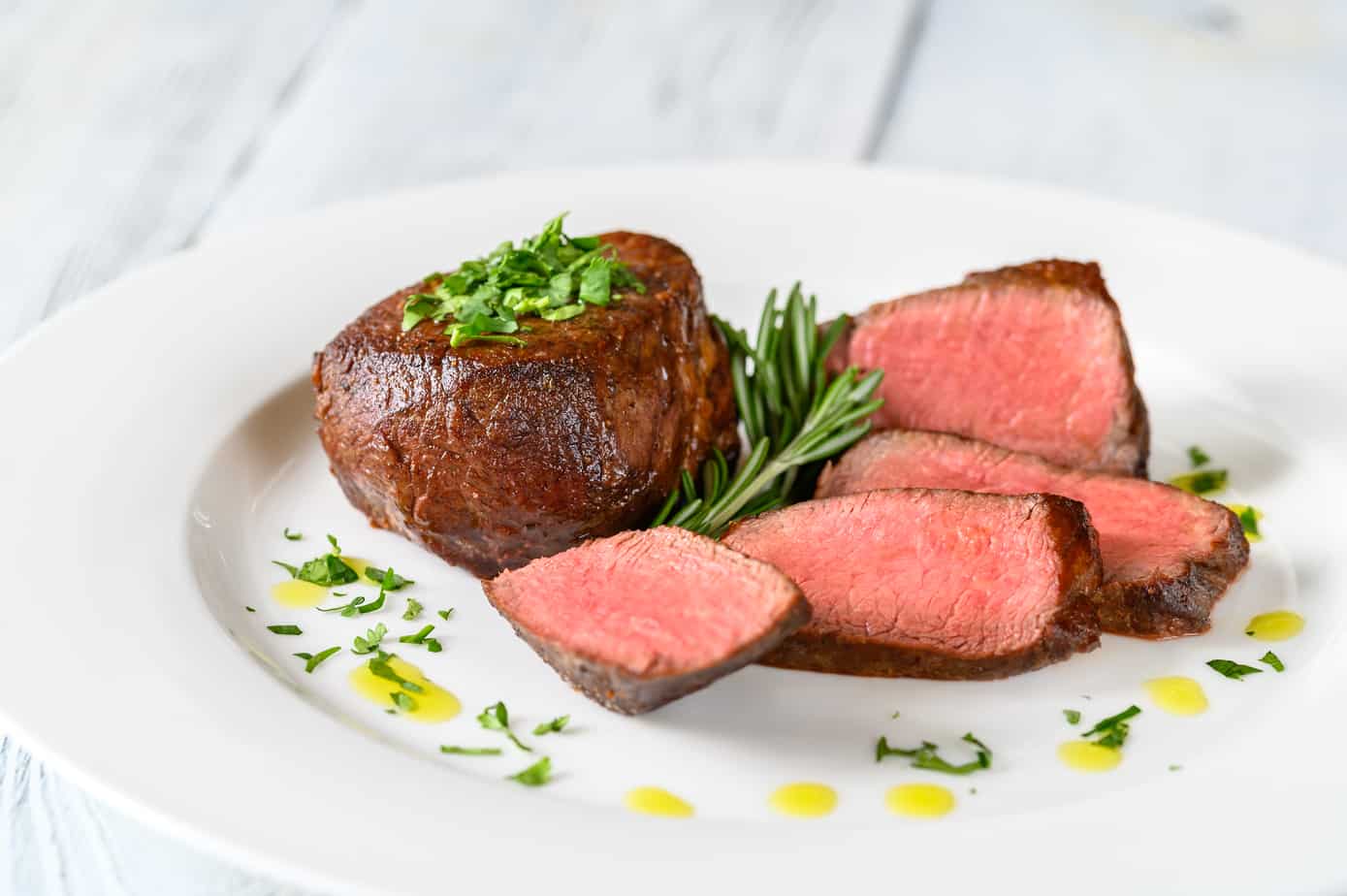
Deliciously tender and with a price-point to match, you can’t go wrong with a filet mignon. It held its own in the battle of filet mignon vs ribeye too!
Feeling Hungry? Discover the Best Places to Order Filet Mignon Online.
Tomahawk Steak
Another showstopper premium steak like the porterhouse, you’ll want to check our guide to tomahawk steak before tackling this beast.
Further Tomahawk Reads:
Picanha
Pican-what, you might ask? This cut from Brazil is a relative newcomer to the grill but is ruffling some feathers and turning some heads (see what we thought in our picanha vs ribeye article).
Feeling Hungry? Discover the Best Places to Buy Picanha Online.
Frequently Asked Questions
We’ll go through some of the more commonly asked questions when it comes to porterhouse vs ribeye.
Answer: We all want a steak that’s juicy and as tender as possible. And while many might think that the cut of meat is the only thing that dictates this, it is also how you cook it. Cooking your steak over high, dry heat will result in juicy and tender steaks.
Answer: This could be for two possible reasons – overcooking and undercooking. Overcooking your steak will result in dry, chewy, tough meat, whereas if you don’t cook it enough, the fat won’t melt, and it’ll make for chewy eating – plus, there is the possibility of food poisoning.
Answer: This is down to your tastes at the end of the day. However, you don’t want to undercook your meat as you could end up rather ill. It’s recommended to have a meat thermometer to hand whenever you cook steak, and you want to aim for an internal temperature of over 130oF.
Question: Is porterhouse steak fatty compared to the ribeye?
Answer: In generally the porterhouse is less fatty at an average of 16 grams of fat compared to the ribeye at around 25 grams of fat.
Porterhouse vs Ribeye – Final Thoughts
If you're looking for top quality beef, Holy Grail Steak Co. is one of the best places to get ahold of the rarest and finest steaks on.
The similarities between these two steaks – they’re both delicious, they’re both tender and easy to cook – can make it a tricky choice if you’re choosing between them. However, it’s down to you, the buyer, as to which one you go for.
In our humble and honest opinion, the porterhouse just pips the ribeye to the post. It’s got a great blend of two delicious and different steaks, as well as being slightly cheaper, and you can get more bang for your buck. Whether you’re feeling particularly hungry or you’re looking to impress that special someone, you really can’t go too wrong with a porterhouse.
The most convenient way to shop life-changing meat. Delivered on your schedule, every 2, 4, or 8 weeks. Get 10% Off your first order using code: RAISEDBETTER10.
Which one would you go for? Let us know in the comments!

